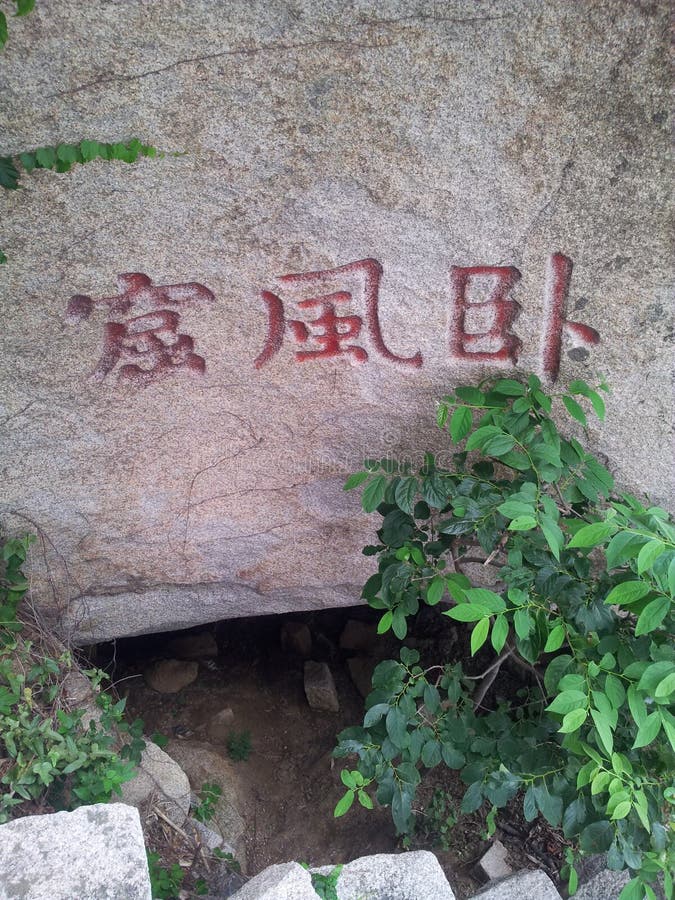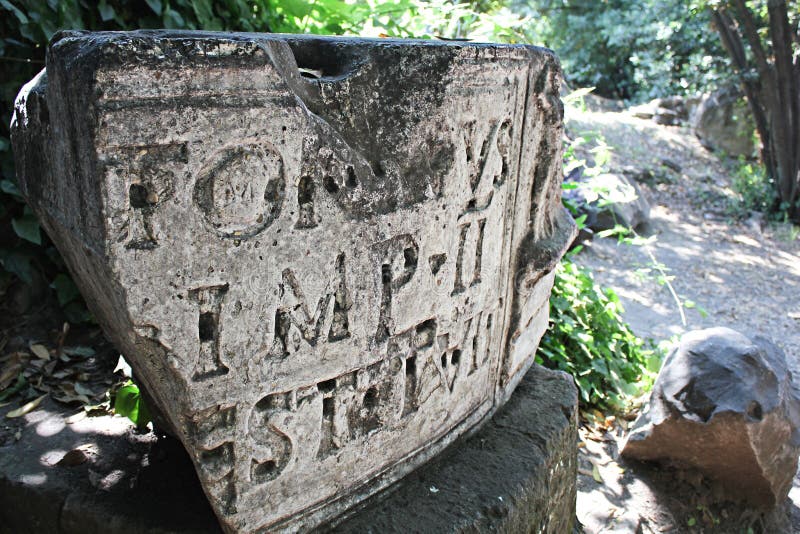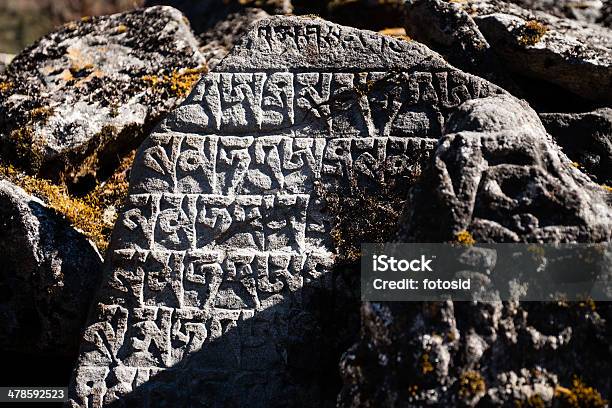A Traveler’s Guide to the Stunning Hedong Stone Inscriptions

An Essential Guide to Visiting Hedong Stone Inscriptions
Nestled in the scenic heart of Shanxi Province, the Hedong Stone Inscriptions stand as timeless testaments to the artistic and political legacy of Emperor Huizong of the Song Dynasty. These intricate steles, crafted with unparalleled skill and infused with poetic elegance, offer a unique glimpse into the soul of China’s cultural heritage. As you wander through the site, you’ll find that each inscription is not just a piece of stone; it is a story etched in time, revealing the profound relationship between art and governance during a pivotal era in Chinese history.
Visiting the Hedong Stone Inscriptions is akin to walking through a living museum, where the whispers of the past resonate against the backdrop of stunning natural landscapes. The inscriptions, renowned for their Slender Gold calligraphy, capture the artistic finesse of Huizong’s reign while reflecting his aspirations to cultivate loyalty and virtue among scholars. As you explore this heritage site, you’ll uncover the nuances of the inscriptions that intertwine art and politics, providing insights into the emperor’s efforts to navigate the complexities of leadership and public perception.
Whether you’re an art enthusiast, a history buff, or simply a curious traveler, the Hedong Stone Inscriptions promise an enriching experience that transcends time. Prepare to be captivated by the beauty of each stone, the stories they tell, and the significance they hold in the tapestry of Chinese civilization. Join us as we embark on a journey to explore this extraordinary site, where history and artistry converge in remarkable harmony.
In This Guide
- An Essential Guide to Visiting Hedong Stone Inscriptions
- The Rich History and Legends of Hedong Stone Inscriptions
- Main Highlights: What You Absolutely Can’t Miss
- Planning Your Visit: A Practical Guide
- Tickets: Prices, Booking, and Tips
- How to Get There: A Complete Transportation Guide
- Local Cuisine and Accommodation Nearby
- Frequently Asked Questions
- Final Thoughts on Your Trip
The Rich History and Legends of Hedong Stone Inscriptions
Nestled in the heart of Shanxi Province, the Hedong Stone Inscriptions are a remarkable testament to the rich cultural and historical tapestry of China. These inscriptions, carved into stone tablets, are not merely relics of the past; they embody a confluence of art, politics, and philosophy that has significantly influenced Chinese heritage.
The history of the Hedong Stone Inscriptions dates back to the Northern Song Dynasty (960-1127 AD), during the reign of Emperor Huizong, an era renowned for its artistic and intellectual achievements. Huizong was not only a patron of the arts but also an adept politician who understood the power of cultural symbolism. He commissioned these inscriptions to propagate his ideals of loyalty and virtue among scholars and officials, thereby embedding his political aspirations within the cultural fabric of the time.
One of the most notable aspects of these inscriptions is their artistic quality, particularly the Slender Gold calligraphy style, which Huizong famously endorsed. This elegant script, characterized by its fluidity and grace, is often regarded as the pinnacle of Chinese calligraphic art. The inscriptions serve both as historical documents and as artistic masterpieces, reflecting the aesthetic sensibilities of their era.
Legends surrounding the Hedong Stone Inscriptions further enhance their allure. It is said that these stones were not merely blank canvases but were imbued with the wisdom and virtues of the scholars and officials whose thoughts they encapsulated. Stories of divine inspiration and the mystical power of calligraphy pervade the narratives associated with these stones, suggesting that the inscriptions held the ability to influence the moral compass of society.
As with many historical artifacts, the Hedong Stone Inscriptions have survived the ravages of time, yet they continue to intrigue scholars and travelers alike. They offer a glimpse into the philosophical underpinnings of the Song Dynasty, highlighting the interplay between governance, culture, and individual virtue.
Visiting the site of the Hedong Stone Inscriptions allows travelers to walk in the footsteps of history, contemplating the intricate relationships between art and authority in ancient China. As you stand before these monumental carvings, you are not just observing stone; you are engaging with the echoes of a civilization that sought to merge the ephemeral nature of life with the enduring permanence of stone.
In summary, the Hedong Stone Inscriptions are more than mere artifacts; they are a vibrant chapter in the saga of Chinese history, where art, politics, and philosophy converge, leaving an indelible mark on the cultural landscape of China. For those intrigued by history, these inscriptions offer an unforgettable experience, inviting you to explore the legends and truths of a time long past.

Hedong Stone Inscriptions.
Main Highlights: What You Absolutely Can’t Miss
When visiting the Hedong Stone Inscriptions (河东石刻), a remarkable collection of ancient steles, you will encounter a treasure trove of cultural and historical significance. Here are the main highlights that you absolutely cannot miss:
1. The Slender Gold Calligraphy
One of the standout features of the Hedong Stone Inscriptions is the exquisite Slender Gold calligraphy, popularized during the reign of Emperor Huizong of the Song Dynasty. Take a moment to admire the intricate strokes and flowing elegance of the characters, which not only showcase the artistic mastery of the time but also reflect the political and cultural aspirations of the emperor himself.
2. Historical Context
Understanding the historical backdrop is essential. These inscriptions were crafted during a period marked by political turbulence and cultural flourishing. Explore how Huizong, known for his patronage of the arts, used these steles to reinforce loyalty and virtue among scholars while managing public perception in a complex political landscape.
3. Artistic Significance
Delve into the artistic significance of the steles. Each stone is not just a medium for text; it embodies the interplay of art and statecraft. The inscriptions serve as a window into the era’s aesthetic preferences and the broader cultural values that shaped the Song Dynasty.
4. The Themes of Loyalty and Virtue
As you walk among the steles, pay attention to the recurring themes of loyalty and virtue that resonate throughout the inscriptions. These ideals were not only reflections of personal values but were strategically positioned to cultivate a sense of morality among the ruling class and the populace.
5. Cultural Interactions
The Hedong Stone Inscriptions are also a testament to the cultural interactions of the time. Engage with the narratives that highlight how these steles communicate historical events and cultural exchanges, providing insights into the social dynamics of ancient China.
6. The Visual Experience
Don’t miss the opportunity to appreciate the physical presence of the steles themselves. The textures, weathering, and placement of these stones in their natural environment enhance the viewing experience, inviting contemplation of the passage of time and the enduring impact of these inscriptions.
7. Guided Tours and Interpretative Signage
If available, join a guided tour or utilize interpretative signage to deepen your understanding of the inscriptions’ context. Knowledgeable guides can offer fascinating anecdotes and expert insights that enrich your visit.
8. Photography Opportunities
Capture the beauty of the inscriptions and their surroundings. The combination of ancient stone artistry and the natural landscape makes for stunning photographs that will serve as lasting memories of your visit.
9. Reflect on the Legacy
As you conclude your visit, take a moment to reflect on the legacy of the Hedong Stone Inscriptions. Consider how these artifacts continue to influence modern interpretations of Chinese history and art, and what they reveal about the complexities of governance and cultural identity.
By immersing yourself in these highlights, you will gain not only a deeper appreciation of the Hedong Stone Inscriptions but also an understanding of their broader significance in the tapestry of Chinese history. Enjoy your exploration!

Hedong Stone Inscriptions.
Planning Your Visit: A Practical Guide
When planning your visit to the Hedong Stone Inscriptions (河东石刻), you’re embarking on a journey that intertwines artistry, history, and the intricate legacy of Emperor Huizong’s reign in China. This remarkable site, known for its stunning steles featuring Slender Gold calligraphy, is not only a testament to imperial power but also a canvas of cultural expression. Here’s how to make the most of your visit.
Best Time to Visit
The ideal time to visit the Hedong Stone Inscriptions is during spring (April to June) and autumn (September to November). These seasons offer mild weather, making it comfortable to explore the outdoor site. Avoid visiting during the winter months when the cold can be harsh, and summer when the heat can be overwhelming.
Getting There
The Hedong Stone Inscriptions are located in the Shanxi Province of China, not far from the city of Datong.
- By Air: The nearest major airport is Datong Yungang Airport, which connects to several cities in China. From the airport, you can take a taxi or a shuttle to reach the site.
- By Train: Datong is well-connected by rail, with high-speed trains from Beijing taking approximately 4-5 hours. Once in Datong, local taxis and buses can take you to the inscriptions.
- By Bus: If you enjoy scenic views, consider taking a bus from nearby cities. The bus system is reliable and often a more affordable option.
Entrance Fees and Hours
- Entrance Fee: Typically, there is an entrance fee to access the site, which helps maintain the area. Check local resources for the most current pricing.
- Opening Hours: The site generally opens from 8:00 AM to 5:00 PM. Arriving early can help you avoid the crowds and enjoy the tranquil atmosphere.
What to Expect
Upon arrival, you’ll be greeted by an awe-inspiring collection of stone steles, each intricately carved and steeped in history. Take your time to appreciate the following features:
- Slender Gold Calligraphy: Admire the artistic style of calligraphy that Emperor Huizong was famous for. These inscriptions reflect not only aesthetic beauty but also the political and cultural ethos of his time.
- Historical Context: Learn about the significance of the inscriptions and their role in imperial propaganda. They are fascinating artifacts that illustrate the interplay between art and politics in the Song Dynasty.
- Photography Opportunities: The inscriptions are set against beautiful natural backdrops, making for stunning photographs. However, be respectful of the site and refrain from using flash near the steles.
Guided Tours and Information
To enrich your experience, consider joining a guided tour. Knowledgeable guides can provide you with deeper insights into the historical context and artistic significance of the inscriptions. Audio guides may also be available for a self-paced exploration.
Nearby Attractions
After visiting the Hedong Stone Inscriptions, don’t miss the chance to explore nearby attractions:
- Yungang Grottoes: Just a short distance away, the Yungang Grottoes are a UNESCO World Heritage site featuring exquisite Buddhist cave art.
- Datong City: Spend some time exploring the ancient city, with its beautiful temples and historical architecture, including the famous Nine Dragon Wall.
Practical Tips
- Dress Comfortably: Wear comfortable shoes and clothing suitable for walking, as the site involves some exploration.
- Stay Hydrated: Bring water, especially if you visit during warmer months.
- Respect the Site: Follow all posted signs and guidelines to preserve the beauty and integrity of the inscriptions.
Conclusion
Visiting the Hedong Stone Inscriptions offers a unique glimpse into China’s rich historical tapestry. By planning your trip well and immersing yourself in the artistry and significance of the site, you’ll gain a deeper appreciation for the cultural heritage of the region. Enjoy your journey into the past!

Hedong Stone Inscriptions.
Tickets: Prices, Booking, and Tips
Visiting the Hedong Stone Inscriptions (河东石刻) is an enriching experience that combines history, art, and culture. To make your journey as smooth as possible, here’s all the information you need regarding tickets, booking options, and helpful tips.
Ticket Prices
Admission to the Hedong Stone Inscriptions typically ranges from 30 to 50 CNY (approximately $5 to $8 USD) per person. Prices can vary based on the season or any special exhibitions, so it’s wise to check in advance.
Booking Information
While advance booking is not always necessary, especially during non-peak seasons, it is highly recommended during peak tourist times or national holidays. Tickets can be purchased directly at the site, but you can also reserve them online through designated ticketing platforms or the official tourism website for the area.
Tips for Your Visit
-
Check Opening Hours: The site generally opens from 8:00 AM to 6:00 PM, but it’s best to verify current hours before your visit, as they can change seasonally.
-
Guided Tours: Consider opting for a guided tour to gain deeper insights into the historical and artistic significance of the inscriptions. Many local tour companies offer packages that include transportation and expert guides.
-
Transport Options: The site is accessible via public transportation, taxis, or rental services. If you’re staying in nearby cities, inquire about shuttle services or tour buses that might include stops at the inscriptions.
-
Cultural Etiquette: Respect the cultural heritage of the site. Maintain a quiet demeanor, avoid touching the inscriptions, and follow any guidelines set by the site management.
-
Photography: Feel free to capture the beauty of the inscriptions, but be mindful of any restrictions regarding flash photography or specific areas where photography may not be allowed.
-
Visit Nearby Attractions: If you have time, explore other historical sites in the region, which can often be included in a day trip itinerary.
By planning ahead and keeping these tips in mind, your visit to the Hedong Stone Inscriptions will be an unforgettable journey through China’s rich history and artistic legacy. Enjoy your exploration!
How to Get There: A Complete Transportation Guide
Reaching the Hedong Stone Inscriptions (河东石刻) can be a delightful journey, steeped in the rich history and culture of China. Located in the Shanxi province, these inscriptions are a testament to the artistry and political significance of the era of Emperor Huizong. Here’s how to navigate your way to this captivating site.
Getting to Shanxi Province
By Air:
The nearest major airport to the Hedong Stone Inscriptions is Taiyuan Wusu International Airport (TYN), which is approximately 100 kilometers away from the inscriptions. This airport has domestic flights from major cities like Beijing, Shanghai, and Xi’an. International travelers may need to connect via one of these cities.
By Train:
If you prefer a more scenic route, traveling by train is an excellent option. Taiyuan is well-connected by train to various cities across China. High-speed trains from Beijing to Taiyuan take around 2 to 3 hours. Once you arrive at the Taiyuan Railway Station, you can opt for local transportation to reach your destination.
By Bus:
Buses are available from nearby cities and towns to Taiyuan. From Taiyuan, you can take a bus to the nearby town of Hedong. Ensure to check the bus schedules ahead of time as they may vary.
Local Transportation to the Inscriptions
From Taiyuan to the Hedong Stone Inscriptions:
-
Taxi or Ride-Sharing:
The most convenient way to reach the Hedong Stone Inscriptions from Taiyuan is by taxi or a ride-sharing service like Didi. The journey takes about an hour, depending on traffic conditions. Ensure that your destination is clearly mentioned in Chinese to avoid any confusion. -
Public Bus:
For a more economical option, you can take a local bus from Taiyuan to the Hedong area. Look for buses heading towards Qi County (祁县), where the inscriptions are located. Once you arrive in Qi County, you might need a short taxi ride to reach the site. -
Guided Tours:
Consider joining a guided tour that includes the Hedong Stone Inscriptions. Many tours around Shanxi Province include transportation, allowing you to enjoy the journey without the hassle of navigating public transport.
Tips for Your Journey
-
Language Barrier: English is not widely spoken in the region, so having a translation app or a phrasebook can be helpful. It’s also a good idea to have the name of your destination written in Chinese.
-
Timing Your Visit: The best time to visit is during spring (April to June) and autumn (September to November) when the weather is pleasant. Be mindful of local holidays when travel may be busier than usual.
-
Cultural Sensitivity: When visiting historical sites, be respectful of the local customs and practices. Take your time to appreciate the intricate details of the inscriptions and the surrounding landscape.
-
Travel Insurance: Consider securing travel insurance before your trip for peace of mind, especially if you’re traveling internationally.
By following this transportation guide, you’ll be well-equipped to embark on your journey to the Hedong Stone Inscriptions, immersing yourself in the profound history and artistry that these inscriptions represent. Enjoy your travels!

Hedong Stone Inscriptions.
Local Cuisine and Accommodation Nearby
Nestled in the historical and cultural landscape of the Hedong Stone Inscriptions, visitors are treated not only to a glimpse of ancient artistry but also to the rich tapestry of local cuisine and accommodation options nearby.
Local Cuisine
When exploring the culinary delights of this region, be sure to indulge in some traditional Shanxi dishes. One must-try delicacy is Shanxi knife-cut noodles (Dao Xiao Mian), known for their chewy texture and often served with a variety of toppings, including stir-fried vegetables or rich meat sauces. Pair your meal with a glass of Shanxi aged vinegar, which is renowned for its complex flavor, making it a perfect complement to many local dishes.
For a taste of sweetness, sample Jinzhong’s malt candy, a popular local treat that showcases the region’s craftsmanship in sugar-making. Street vendors and small eateries near the stone inscriptions often serve these delightful snacks, perfect for a quick bite as you explore the area.
If you’re in the mood for a proper meal, check out Lao Shanxi Restaurant, known for its authentic ambiance and a wide array of Shanxi specialties. Here, you can enjoy a hearty bowl of Bean Noodle Soup, a comforting dish that warms the soul after a day of exploration.
Accommodation
For a restful stay, there are several charming hotels and guesthouses close to the Hedong Stone Inscriptions that cater to various budgets. One standout is the Hedong Cultural Hotel, which offers modern amenities while celebrating the local heritage in its decor. Guests can enjoy comfortable rooms and a complimentary breakfast featuring local flavors.
If you prefer a more intimate experience, consider The Stone Inn, a quaint guesthouse located just a short walk from the inscriptions. This family-run establishment provides a cozy atmosphere, allowing you to immerse yourself in the local culture. The owners are often eager to share stories about the area and can provide tips on hidden gems to explore.
For those looking for a more upscale experience, the Shanxi Grand Hotel offers luxurious accommodations with stunning views of the surrounding landscape. With its elegant dining options and proximity to the stone inscriptions, it’s ideal for travelers seeking comfort and convenience.
In summary, the vicinity of the Hedong Stone Inscriptions offers a delightful blend of culinary experiences and accommodation options, ensuring that your visit is both memorable and satisfying. Enjoy the flavors and hospitality of this captivating region as you delve into its rich history!

Hedong Stone Inscriptions.
Frequently Asked Questions
Frequently Asked Questions about the Hedong Stone Inscriptions
1. What are the Hedong Stone Inscriptions?
The Hedong Stone Inscriptions are a series of ancient stone carvings located in the Hedong region of China, primarily associated with the reign of Emperor Huizong of the Song Dynasty. These inscriptions not only showcase exquisite calligraphy, particularly the Slender Gold style, but also serve as important historical documents that reflect the cultural and political dynamics of the time.
2. How can I get to the Hedong Stone Inscriptions?
To reach the Hedong Stone Inscriptions, you can travel to the city of Taiyuan in Shanxi Province. From there, local transportation options such as buses or taxis can take you to the specific site. It’s advisable to check local schedules and consider hiring a guide for a more informative visit.
3. Are there any entry fees or permits required?
Most sites featuring historical inscriptions like the Hedong Stone Inscriptions do not charge an entry fee. However, it’s best to check in advance as policies can change. If you plan to visit nearby museums or protected areas, there may be associated fees.
4. What should I expect when I visit?
Visitors can expect to see beautifully carved steles with intricate inscriptions. The site is often tranquil, providing an opportunity for reflection on the rich cultural history. Many inscriptions contain poetic texts and political messages, making it a fascinating experience for history buffs and art enthusiasts alike.
5. Is there any guided tour available?
Yes, there are guided tours available that cater to both individual visitors and groups. These tours often provide in-depth information about the history and significance of the inscriptions. You can book a tour through local travel agencies or online platforms that specialize in cultural experiences in China.
6. What is the best time to visit the Hedong Stone Inscriptions?
The best time to visit is during the spring (April to June) and autumn (September to November) seasons when the weather is mild and the scenery is particularly beautiful. Visiting during these times allows you to fully enjoy the outdoor environment without the intense heat of summer or the cold of winter.
7. Can I take photographs at the site?
Photography is generally allowed at the Hedong Stone Inscriptions, but it’s always good practice to check for any specific rules at the site. Be respectful of the cultural significance of the inscriptions and avoid using flash photography that may damage the stone.
8. Are there any facilities available for visitors?
Basic facilities such as restrooms and information boards are typically available at the site. However, amenities may be limited, so it’s advisable to bring water and snacks, especially if you plan to spend an extended period exploring the area.
Final Thoughts on Your Trip
As you conclude your journey through the mesmerizing world of the Hedong Stone Inscriptions, take a moment to reflect on the rich tapestry of history, art, and culture that envelops these remarkable monuments. Each inscription serves not merely as a historical artifact but as a voice from the past, echoing the thoughts and aspirations of those who lived in a time when the power of words was both a means of governance and a solemn art form.
Exploring the intricate calligraphy and the profound messages carved into these stones offers insights into the delicate interplay between culture and politics during the reign of Emperor Huizong. This experience is not just about witnessing ancient art; it is about connecting with the philosophies and virtues that shaped a civilization.
As you leave, let the spirit of these inscriptions inspire your own journey. Whether you are a lover of history, an art enthusiast, or simply a curious traveler, the Hedong Stone Inscriptions invite you to carry forward the stories of loyalty, virtue, and artistic expression that resonate through time. Embrace the reflections of the past, and allow them to enrich your present and future adventures. Safe travels!